Name RFA Fort Austin Laid down 9 December 1975 Identification Pennant number A386 Construction started 9 December 1975 Length 185 m Builder Scott Lithgow | Ordered November 1971 Commissioned 11 May 1979 Status Active 2014 Launched 9 March 1978 Draft 9 m Operation Falklands War | |
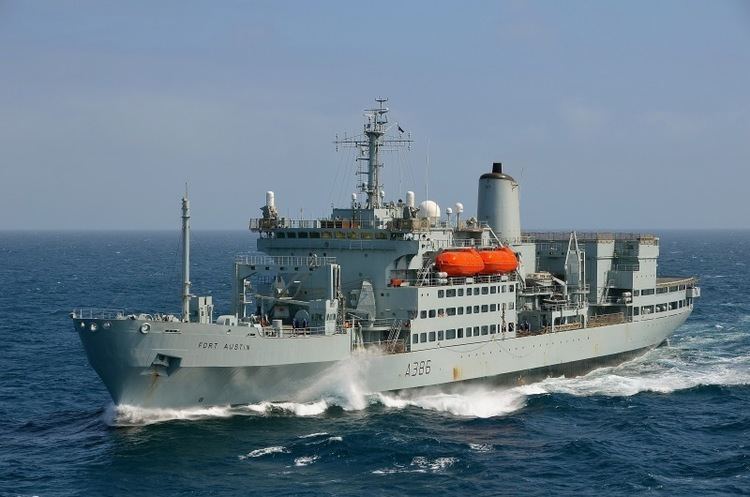 | ||
RFA Fort Austin is a British Fort Rosalie-class dry stores ship of the Royal Fleet Auxiliary.
Contents
Fort Austin was laid down at Scott Lithgow in 1975, launched in 1978 and commissioned in 1979. These ships were designed to carry a wide range of dry stores to support fleet task forces; ammunition, food, explosives. They have extensive aviation facilities, with two flight decks, one to the stern and one spot on top of the hangar, up to four Sea Kings can be stored in the large hangar. These ships also have the capability to replenish ships at sea, via six RAS points.
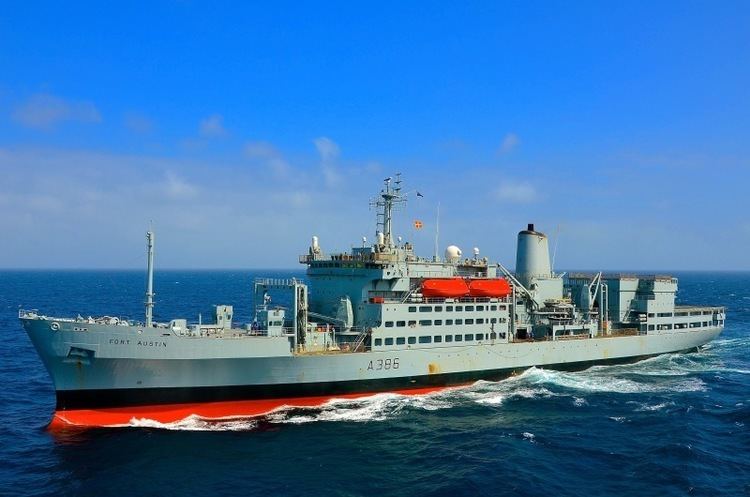
Falklands War 1982
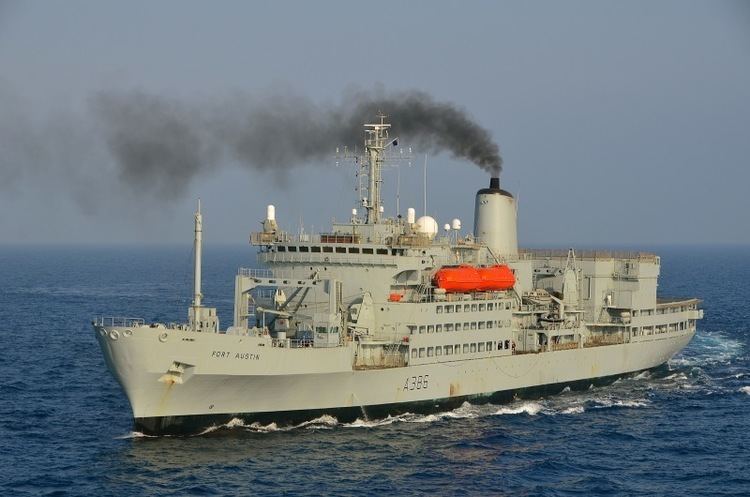
When the Falklands War began, the ship was deployed in the western Mediterranean for the annual Spring Train exercise, and received orders to head south, taking part in the landings at San Carlos Water as a stores and ammunition ship. When the order to head south was given, several warships had the WE.177A nuclear weapon deployed aboard. Amongst these were the Type 22 frigates HMS Broadsword and HMS Brilliant and the aircraft carriers HMS Hermes and HMS Invincible. Some newspaper reports also named RFA Fort Austin. The Ministry of Defence explored various options to transfer these nuclear weapons from the frigates to the safety of the deep magazines aboard Fort Austin, Hermes and Invincible. An MoD publication describes a complex series of manoeuvres to avoid the presence of these nuclear warheads in areas that would break the UK obligation to the Treaty of Tlatelolco, often referred to as the Latin-America Nuclear Free Zone. In no circumstances could ships carrying nuclear weapons enter territorial waters around the Falkland Islands. After the conflict ended, weapons were transferred at sea to the two RFAs Fort Austin and Resource for transport back to the UK.
2000s
In 2000, the ship supported the British military intervention in the Sierra Leone Civil War.
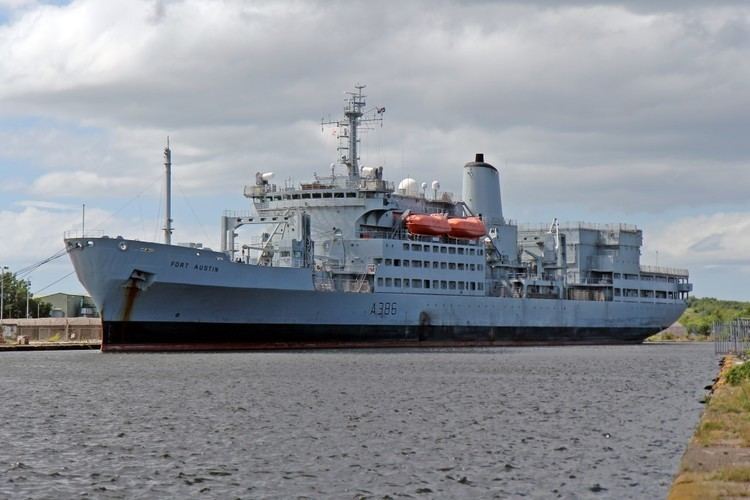
Beginning in September 2007, the ship underwent a major refit and modernization at the A&P Tyne shipyard in Hebburn, Tyne and Wear
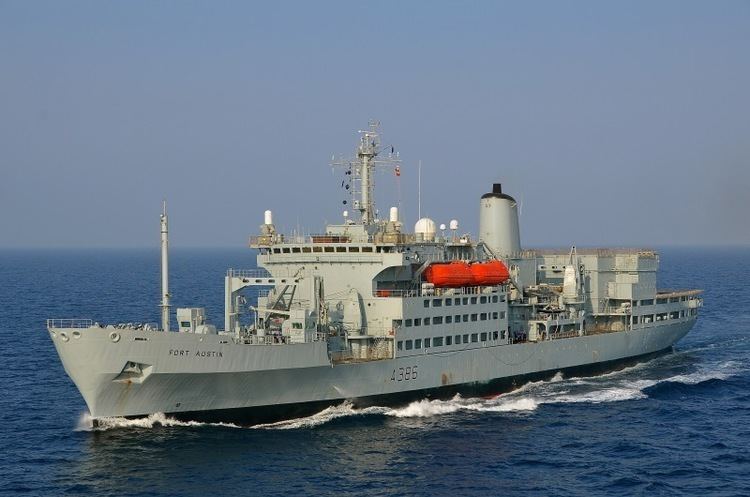
In July 2009, RFA Fort Austin was decommissioned and placed in reserve at Portsmouth Naval Base. Following the Strategic Defence and Security Review of October 2010 it was decided to reactivate her at the expense of the larger RFA Fort George, which would be decommissioned.
2010s

On 27 May 2011 Fort Austin left Portsmouth under tow by the Belgian tug Union Wrestler and tug Svitzer Pembroke for a £40m refit at Cammell Laird in Birkenhead. This refit was intended to keep her in service until 2021. Later that year it was announced that her service life would be extended until 2023; the Fort class will ultimately be replaced by the Fleet Solid Support element of the Military Afloat Reach and Sustainability programme.
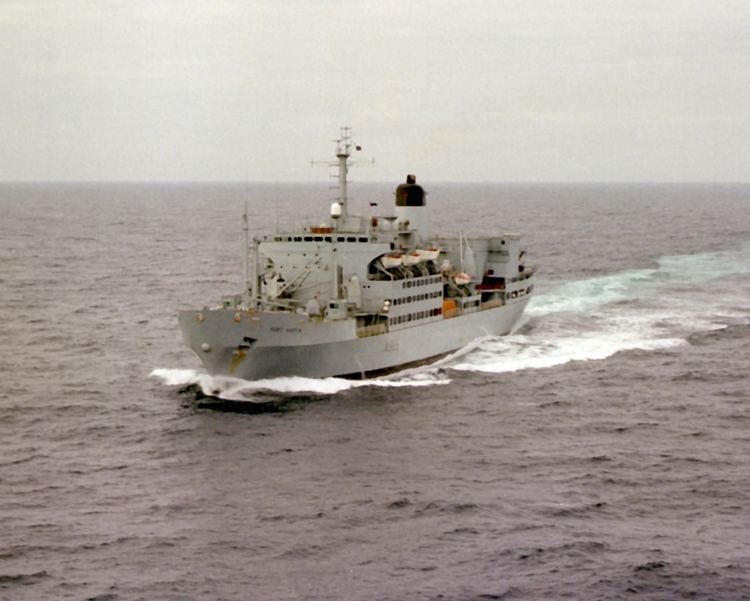
She left Birkenhead on 5 September 2012, arriving three days later at DM Crombie in the Firth of Forth. She arrived back in Plymouth at the end of 2012 and spent early 2013 exercising in home waters.
Fort Austin formed part of the COUGAR 13 task group, providing stores, fuel, water, and ammunition Fort Austin is also participating in the 2014 IMCMEX.
